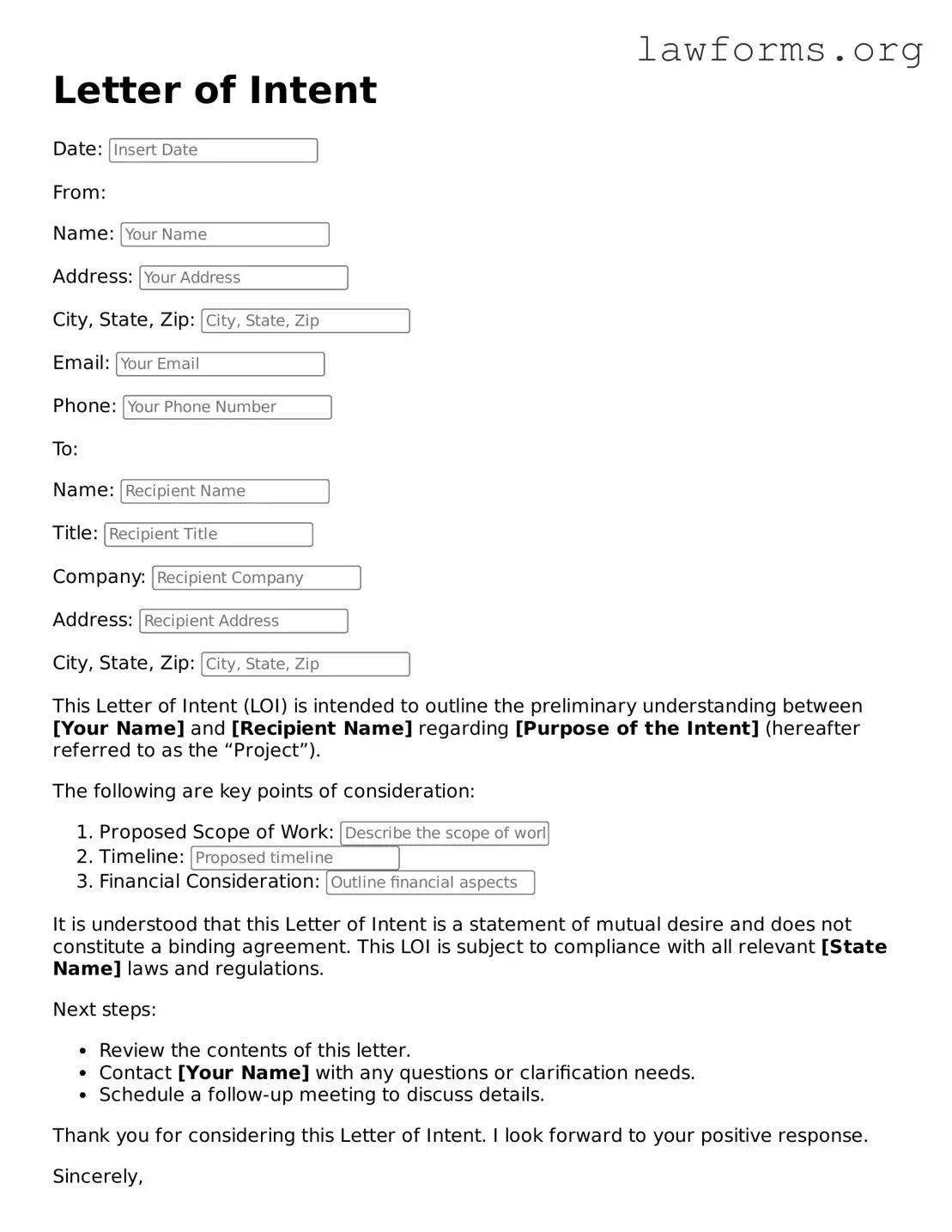Valid Letter of Intent Form
A Letter of Intent (LOI) is a document that outlines the preliminary understanding between two parties who intend to enter into a formal agreement. It serves as a roadmap for negotiations, detailing the key terms and conditions that will be further developed in a final contract. If you're ready to take the next step, fill out the form by clicking the button below.
Customize Document Online
